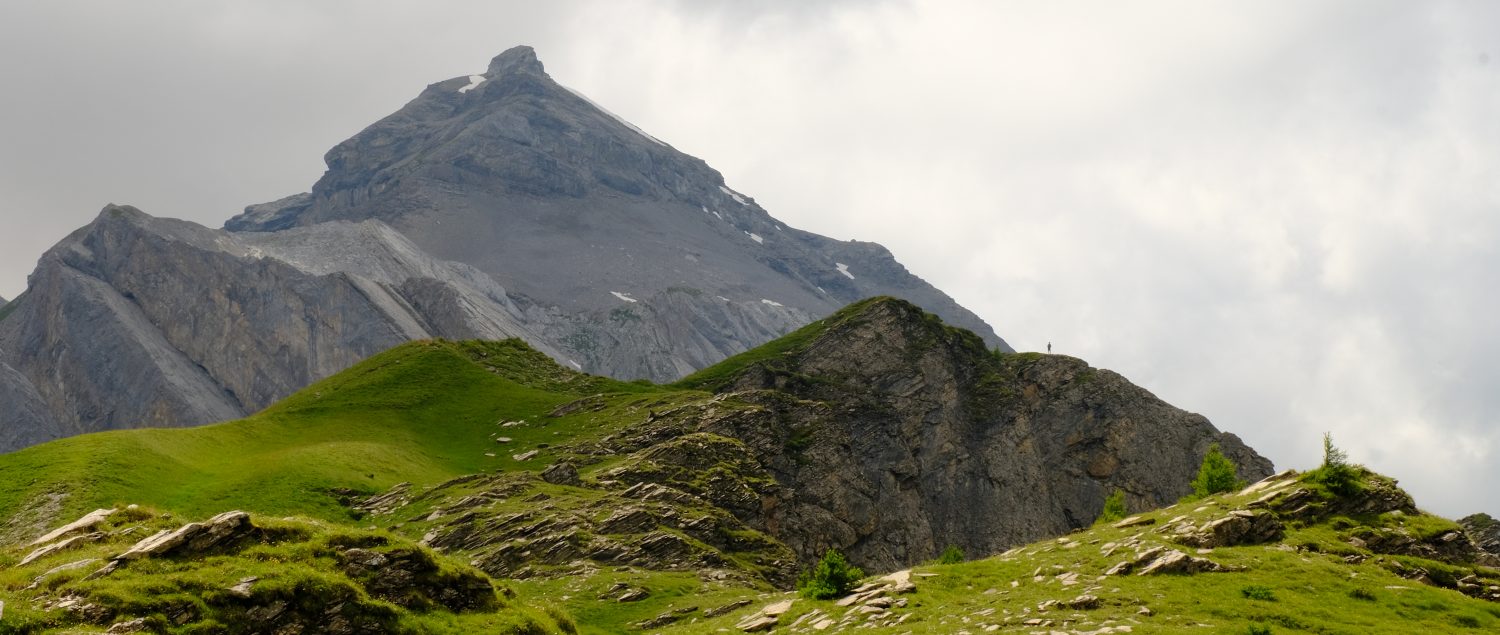Steve, Mart, Stu and Nick juggled their chunky breakfast crockery around in a tired, wordless way on the too small shiny wooden table. The tree-shaded, white walled patio dining area was cold and blustery this morning, so everyone had been herded into the multi-purpose hotel front room. We were a few days into the climbing trip and sparky optimism had been replaced with dull muscle ache, tender fingertips and a growing disgruntlement with chilly, windy weather. The Greek island of Kalymnos in the Dodecanese at the end of April might not be the best for climbers but was proving to be great walking weather. Lucky for me at least.
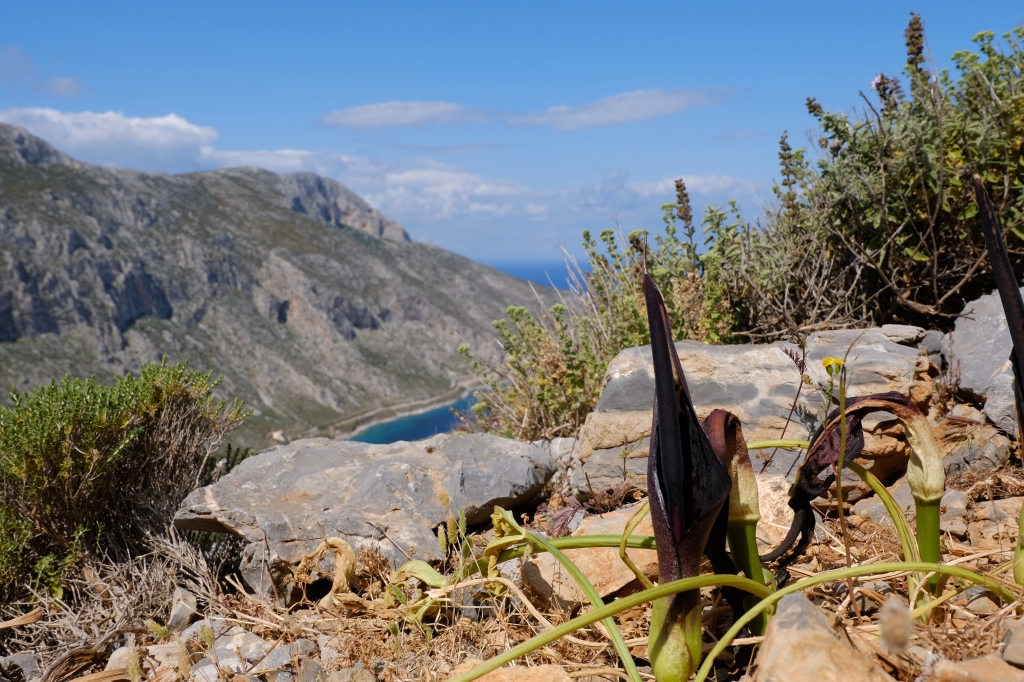
Photo credit: Sally Woodbridge
My decision not to bring any climbing kit on the trip had felt like admitting defeat in my ambivalent relationship with rock climbing. Amazingly though Kalymnos was helping me to distance myself from these mixed emotions. The island offers so much more than just crags and guidebook ticks. Yes there is brutality in the jagged grey peaks, the buffeting winds and parching summer sun but in spring the bright resilient plants and abundant insect life thrives. Half-hidden ancient shepherds’ paths with free ranging whickering goats ache to be re-trodden and revived.
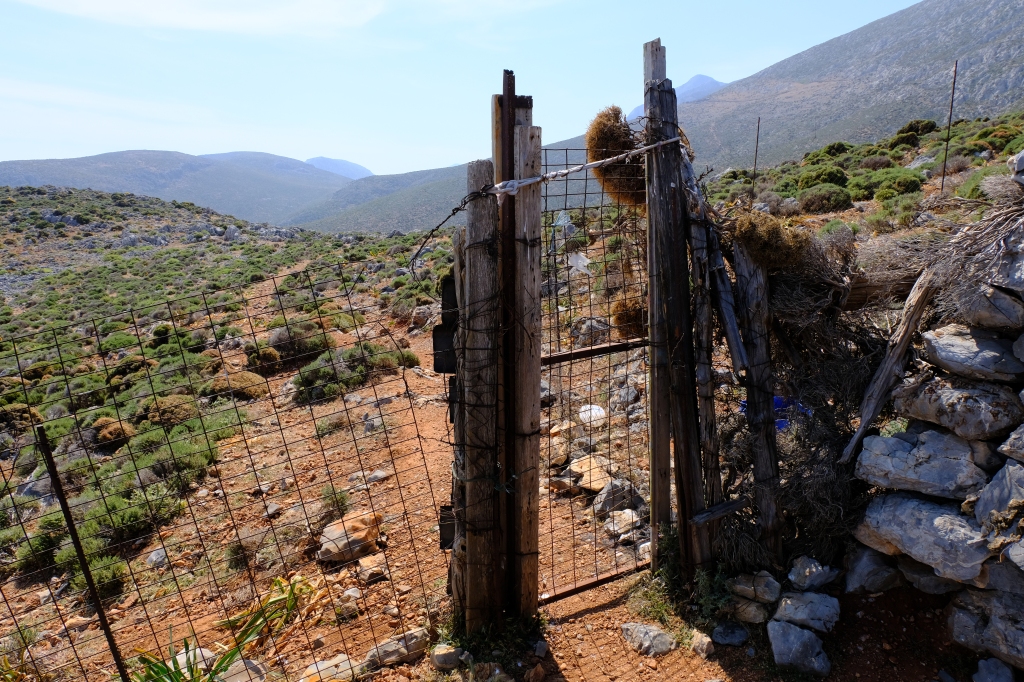
Photo credit: Sally Woodbridge
With a few exceptions walking on Kalymnos is a masterclass in attentiveness. An unquiet mind can’t get snagged and looped on the past. The old ways and goat paths are almost totally overgrown, so a keen eye on the middle distance is needed to discern the centuries’ worn hollow of the route. Paint-splashed rock waymarks also help intermittently. Immediately underfoot is incredibly rough too, studded with uneven rock, overgrown with spiny vegetation or steep and loose with skiddy shards. A gentle gradient transforms in an eye-blink into a committing scramble through a barrier of sheer rock. You need to be self-sufficient, physically and mentally. Once away from the main climbing areas I walked for hours without seeing anyone, even on sections of the better known Kalymnos Trail.
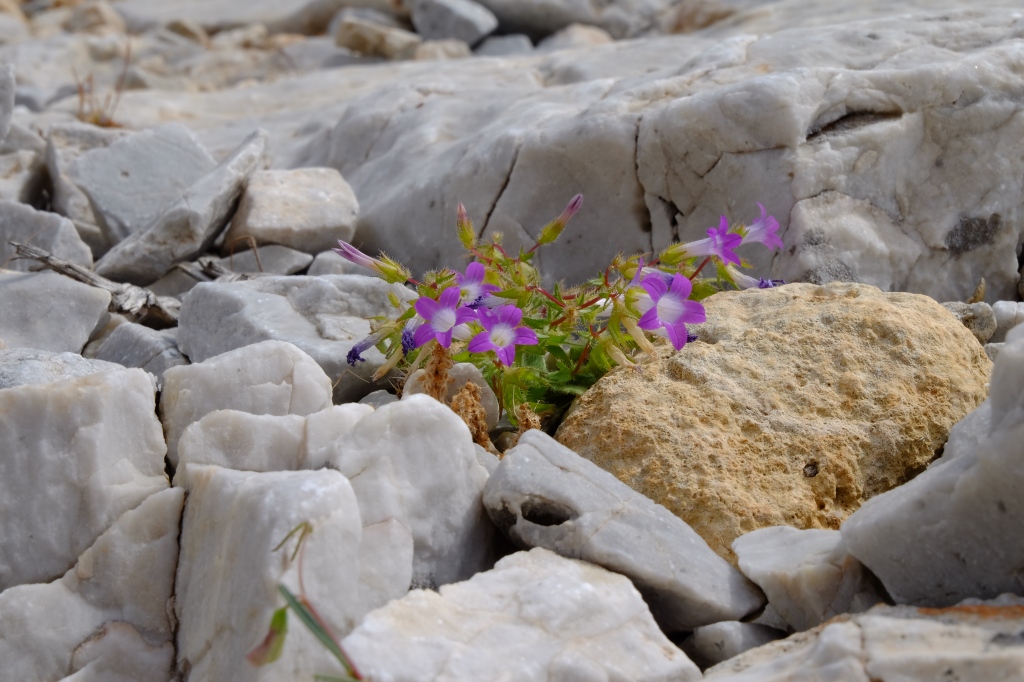
Photo credit: Nick Haine
To get a feel for the island’s walking routes I’d begin with the Italian Path. This is the best known walk on Kalymnos. Start from the hubbub of the port town of Pothia. Ask a local, any local, the way to the start and emerge from the buildings to follow drunken flagstones through a wide flower dotted pass to a view of the fertile Vathys valley. This is the main agricultural area on the island with citrus, olives and grapes grown here, dotted throughout with beehives. This is where the Italian path proper ends but you can continue and descend as the route becomes less distinct to reach a wide red dust farm track that leads easily along to a small church. From there another sparsely marked path climbs to back onto the ridge passing below the island’s highest summit, Profitis Ilias (676m). An improving track then leads down to the historic town of Hora, overseen by its cliff-top eleventh century castle.
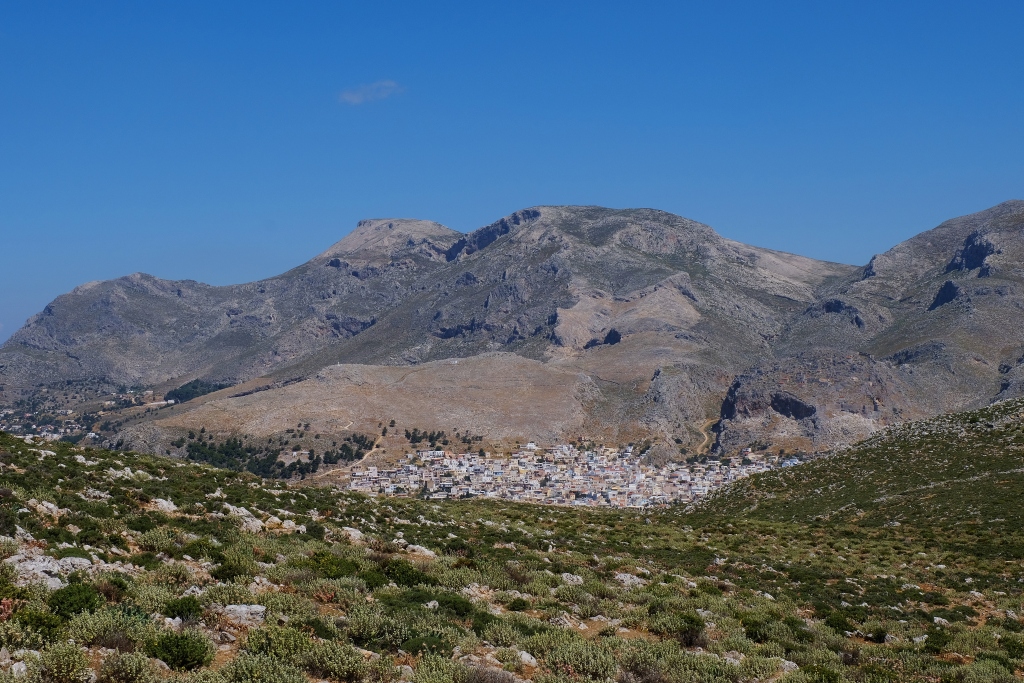
Photo credit: Sally Woodbridge
I mostly used public buses to access the walks and even managed a few halting conversations with older locals. Many younger kalymnians have emigrated to the US or Australia but family ties remain strong so these chats sometimes ended up sharing tales of far-flung destinations. At Easter you will be comprehensively warned about the dangers of throwing dynamite at the festivities, a defiant local tradition that is both condoned and feared on the island. If you’re very unlucky you’ll hear the tale about the American who did this up by the church above Pothia and the subsequent difficulty in collecting his remains.
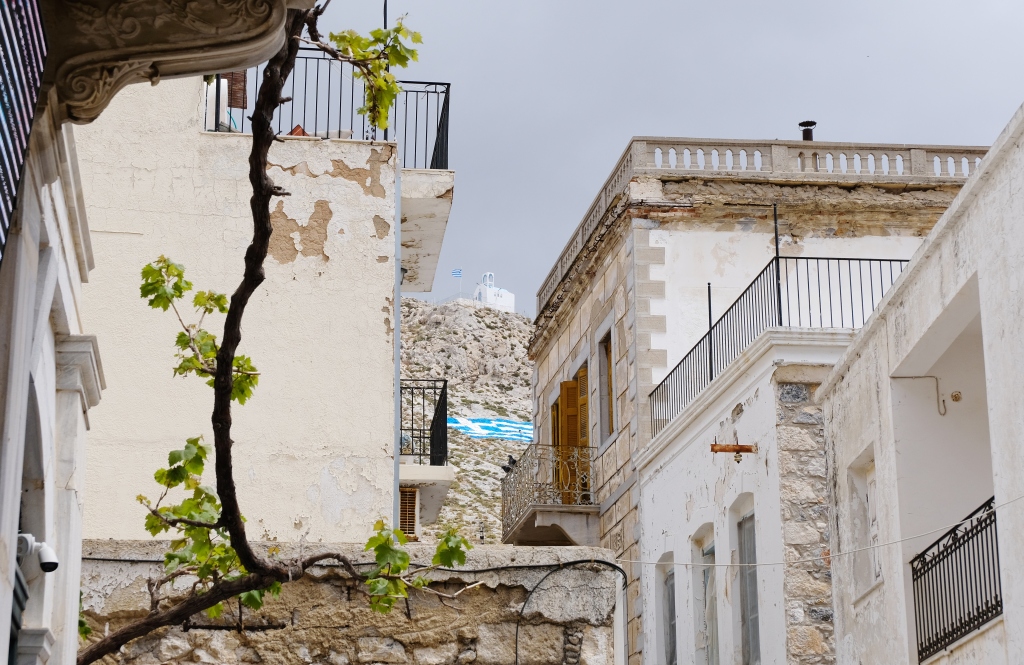
Photo Credit: Sally Woodbridge
The rugged quiet north of the island can also be explored using the public bus. Disembark just beyond Arginonta ascend the road to the Vathys valley then pick up a climbers’ footpath towards the Arginonta Skyline crags on the northern spine of the island. Shortly before the climbing area starts turn right through a break in the cliffs and then continue parallel with the Vathys road. In spring mounds of lime green greek spiny spurge, floppy pink cretan rockrose and bushy aromatic thyme accompany your ascent. This habitat, known as garrigue, flourishes despite the harsh winds and lack of water. On the ridge slow-growing juniper has pushed up between the sharp-sided grey limestone carapace and provides shelter for the heart-shaped leaves of the cyclamen below in a habitat known as maquis. After meeting the Vathys road again, as it twists south, descend instead back to Arginonta on the opposite side of the road. This leads down through rough goat grazing to a grove of ancient olive trees and, huddled at their bases, glossy green arum leaves with velvety brown, stinky flower spikes.
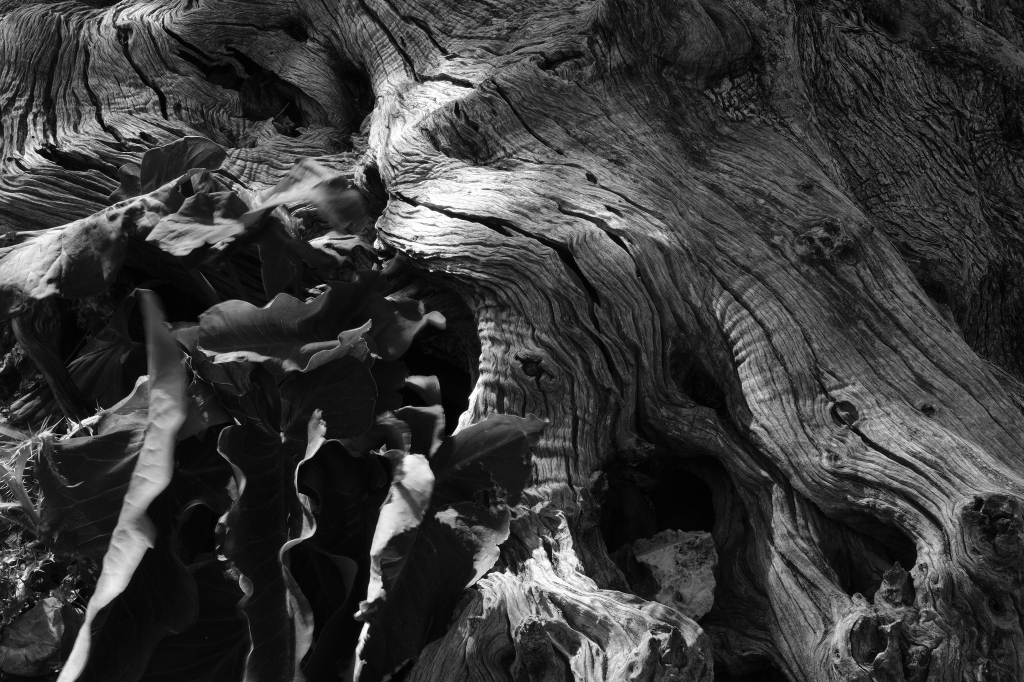
Photo credit: Sally Woodbridge
A careful study of books and maps can reveal many other potential walking objectives such as Sikati Cave, Prophitis Ilias and the Vathys Valley but remember walking on Kalymnos is tough. Ignore any ideas about Naismith’s rule, maybe you average 5/6km per hour on the flat in the UK, on Kalymnos don’t be surprised by half of that. Don’t expect paths to be as obvious on the ground as they look on the maps, don’t expect signposts and look out really carefully for blue or green paint splodges marking the routes. Some routes marked on the map may actually be committing scrambles not paths, I used the descriptions in the Kalymnos Trail book by Carl Dawson to identify these. Cliff edges are not necessarily obvious from the maps (or from above whilst descending). Also be really careful to avoid potentially fatal heatstroke, there is very limited shade on the island. I also recommend walking in long trousers to avoid getting your legs badly scratched by the spiny vegetation.
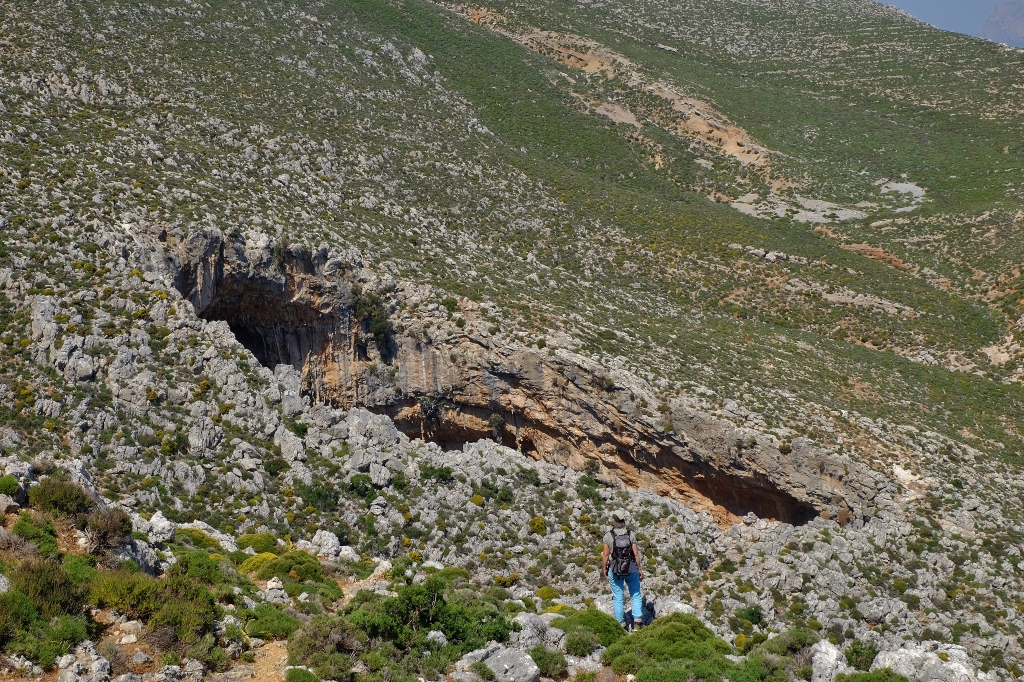
Photo credit: Nick Haine
However! In spring Kalymnos is utterly beautiful. Walking these ancient trails will help preserve them. There is a heady thyme scented mix of local culture, laid back climbers vibe and mountaintop views from this jagged protrusion in the sapphire blue Aegean Sea. Taking your climbing gear is optional, not mandatory.
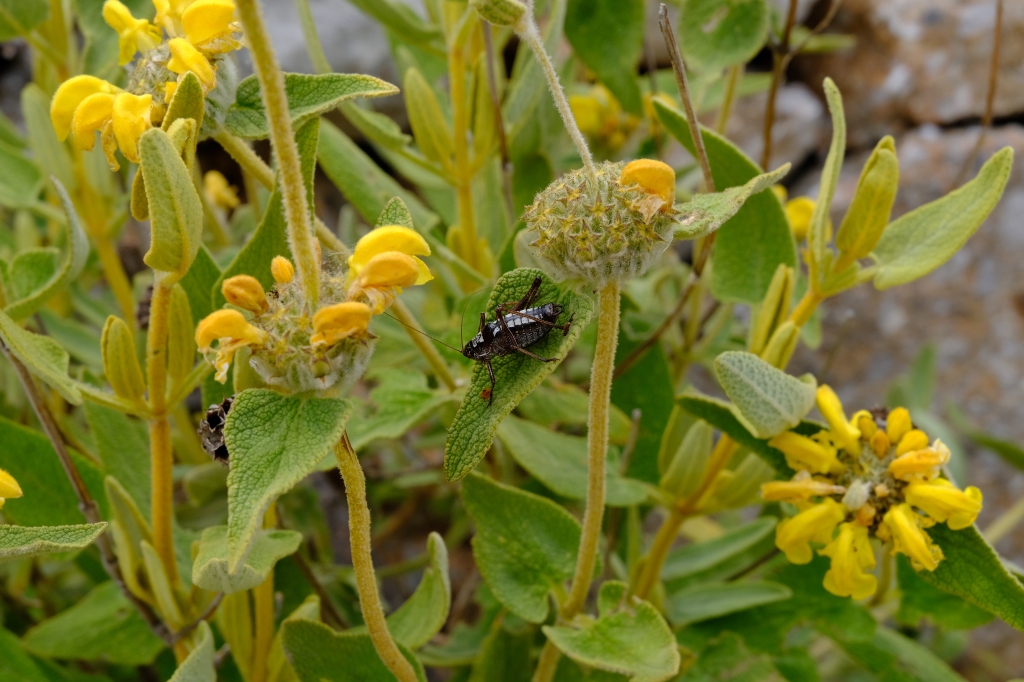
Photo credit : Sally Woodbridge
Published in Austrian Alpine Club (UK) Newsletter, No. 241, Spring 2024.

